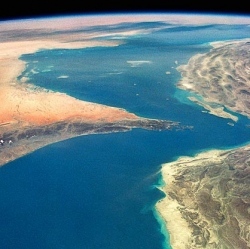
TESS, a new NASA planet-hunting spacecraft, is set to write the next revolutionary chapter in astronomy by revealing more details about exoplanets and, perhaps, uncovering the first signs of life seen beyond Earth. For centuries we knew of no planets beyond this solar system, until the first exoplanet discoveries in the 1990s.
Over the past several years NASA’s Kepler Space Telescope has accelerated the pace of discovery, making it clear the galaxy is awash with planets. But Kepler is crippled and running out of fuel.
Fortunately, its successor, the Transiting Exoplanet Survey Satellite, is waiting in the wings. More accurately, it’s sitting in the nose cone of a rocket in Florida.
TESS is scheduled to launch Monday aboard a SpaceX Falcon 9 rocket, one of many missions Elon Musk’s rocket company has partnered on with NASA. SpaceX also uses its Dragon cargo ships to resupply the International Space Station.
NASA’s TESS will monitor 200,000 of the nearest stars using the same discovery method that enabled Kepler to spot 2,600 confirmed exoplanets. Its four wide-field cameras will watch for tell-tale dips in brightness that can be caused by an orbiting planet passing in front of a star.
"TESS is going to essentially provide the catalog, like the phone book, if you will, of all the best planets for following up, for looking at their atmospheres and studying more about them," MIT astrophysics professor Sara Seager told me. Seager is part of the science leadership team for TESS and a driving force in the search for signs of life around other stars.
After TESS finds those worlds, a more sophisticated telescope, such as the James Webb Space Telescope that is set to launch in 2020, will be used to look for those signatures of potential life.
"To me, TESS represents the very first opportunity to really, truly make progress in this area of trying to find signs of life on other worlds," Seager says. "It really has a chance to find a rocky planet … that’s the right distance from its star, the right temperature to have life on its surface. Tess will find a pool of planets like that."
Seager notes that many of the worlds TESS is likely to find may be similar to Earth in size and rocky composition, but will be different and weird in other ways.
